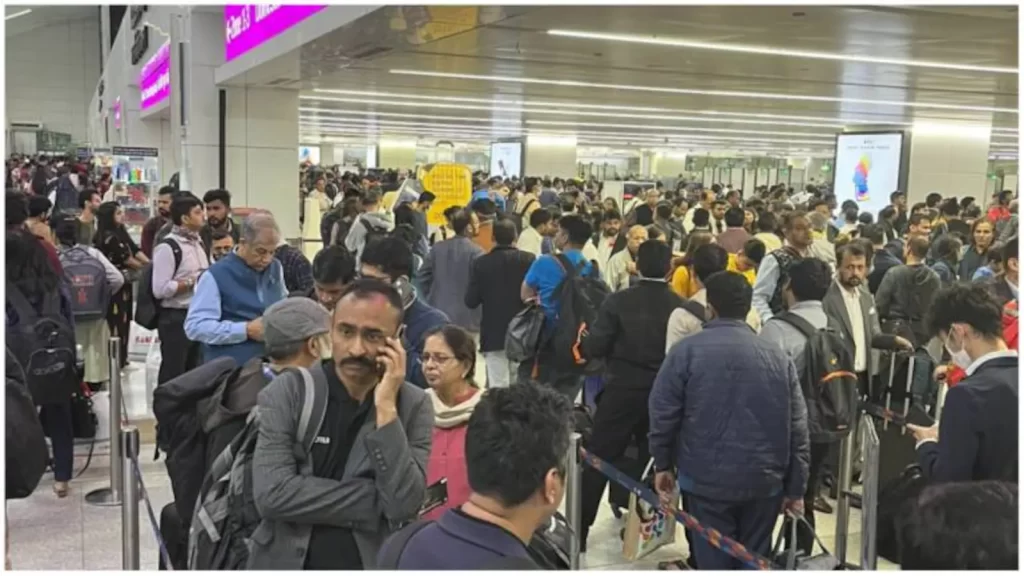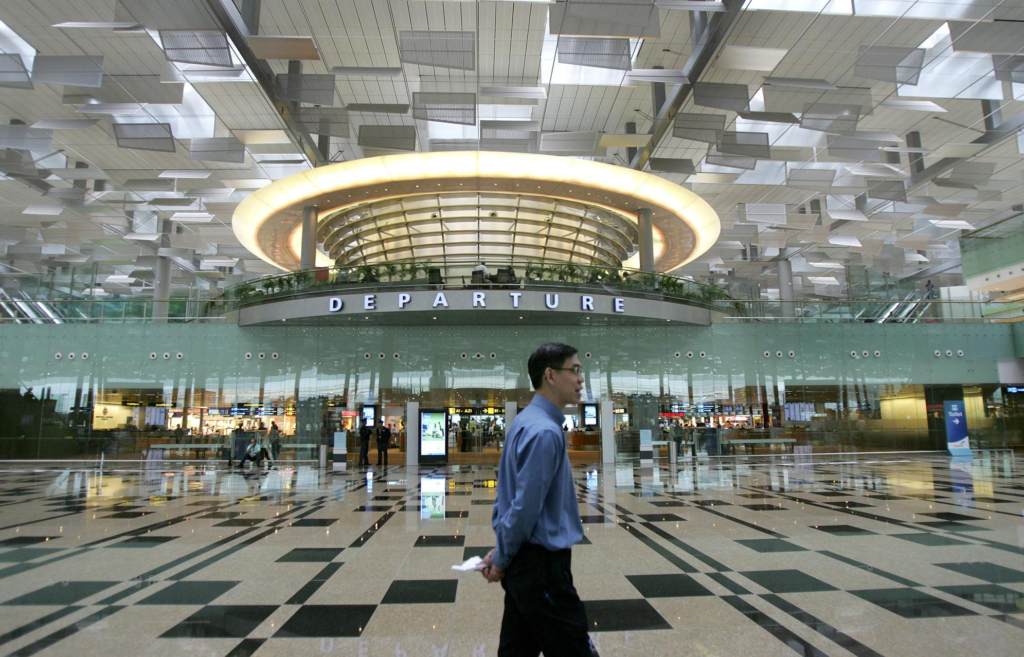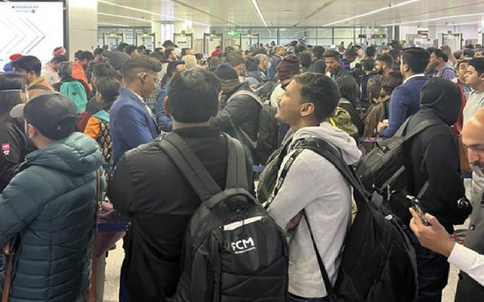Musings by Shekhar Nambiar
The more I use airports the less inclined I become to travel. The airline check-in and security processes are so stressful that even the toughest among us might not want to ever take a plane.
Also read: Football to White Christmas!
If airports become the biggest deterrent to travel, the future of aviation can be in peril. Surely, as a key stakeholder, the industry must take note of this and factor in the state of our airports in business plans for the sake of their own future.

It’s holiday season and after months of the pandemic, there is increased domestic passenger traffic and possibly tourists’ inflow as well. Delhi’s Indira Gandhi International Airport handled over 39 million passengers in FY’22. Mumbai’s Chhatrapati Shivaji International Airport had nearly 22 million followed by Kempegowda International Airport, Bangalore at over 16 million and Hyderabad’s Rajiv Gandhi International Airport 12.5 million (Statista.com).
With this increase in demand, there has been no commensurate capacity building. There’s a shortfall in staff, including in security, at least at Delhi airport. As a measure, to ease bottlenecks at various points at the airport, the number of flights per hour has been brought down.
Also read: Tales from two cities
There’s reason to believe that a lot many people have converted and have become ardent fans of rail travel. The government has done well to provide better services to the rail traveller. On the face of it this looks fair, one sector benefiting from the other. But this is not as it should be. Progress cannot be at the expense of sacrifice of one for the other. The Railways have their own place in the scheme of things. So too the aviation sector.
Indian aviation
India ranks third among the global aviation sector. The government’s policy and approach to aviation is encouraging and welcoming. More and more greenfield airports have come up, several in small towns and cities. Goa has a new airport – named after its former late Chief Minister Manohar Parrikar – that the Prime Minister opened on December 11. With the opening of the airport at Mopa, the state’s long-standing demand for a full-fledged civilian airport has been fulfilled, which can give a fillip to domestic tourism.
Also read: School then and now
The encouragement to new domestic carriers, including Akasa, and measures such as visa-on-arrival will all go a long way to boosting passenger carrying capacity and tourism. The remaining hiccup is the operationalising of Jet Airways in its new avatar, pending settlement of issues with its lenders in relation to payment of arrears to the carrier’s former employees.

In an interview on aviation’s prospects and growth to Sansad TV earlier in the week, Civil Aviation Minister JyotiradityaScindia drew a parallel with India’s telecom sector in the early 2000s: supply meeting demand.
The aviation industry’s new carriers and fleet expansion have created enough supply to meet the large growth in passenger traffic. As with the telecom sector, these augur well for fare stabilisations eventually.
Fares have soared to as high as 40% in certain domestic sectors thanks largely to the steep hikes in airline turbine fuel (ATF) prices and also to the demand surge following the lifting of Covid travel curbs.
Also read: A slice of history and Havana
On the supply side, there were hiccups, chief among them being the time taken for starting all over again from the sluggishness following the pandemic. There were other issues too, including the collapse of an airline and the uncertainty over the sale and privatisation of Air India.
Record purchases
Overall, the aviation sector is poised for growth. Air India, the country’s largest carrier, is on the threshold of new aircraft acquisitions, including latest generation Boeing and Airbus. The purchases worth tens of billions of dollars will set a world record with 500 new aircraft – 100 wide-body and 400 narrow-body long-haul jets. It will be the biggest volume purchase by a single airline surpassing American Airlines’ over 450 aircraft bought some 10 years ago, and will include Airbus 350s and Boeing 787s and 777s.

An announced consolidation with Vistara will make Air India the country’s leading domestic and international carrier with a combined fleet of 218 aircraft. This will make it India’s largest international carrier and second largest domestic carrier. Another coming together will be Air Asia and Air India Express, further strengthening the fleet operation from the Air India stable.
The industry’s expansion and long-term plans look promising. Indeed, the focus on long haul and wide-bodied aircraft bodes well for the future.
Also read: The romance of train journeys
There are ambitious plans to make India the international hub for this part of the world. This would mean competing with Bangkok, Hong Kong and even Singapore. Benchmarks and targets will inevitably be high. Our airport managers will need to set the highest standards and work closely with government. As agencies such as security, customs, immigration and policing are in government hands.

T3 or T1
After the positive story, back to our airports. Every time I pass through Delhi’s Terminal 3, or T3, it looks to me as rundown, overused and jaded. The carpets seem worn-out and the few shops around offer a lacklustre experience. The eating places lack variety, the food tasteless and frightfully expensive. Of the toilets the less said the better. Most times they are overcrowded with leaky faucets and wet floors like any public facility out in the city. As for the complimentary cart service, which are of great help to the elderly and differently abled, they are forever in short supply. All this from a privately run operator.
T3 is also one of the most crowded and packed-to-capacity airport terminals. Not a day passes without long queues of people waiting for airline check-ins and security, and possibly inordinately delayed take-offs, notwithstanding Delhi’s three runways and a fourth one getting ready for operations.
Delhi is supposed to be a silent, announcements-free airport. But this also leads to confusions galore with only that many monitor screens for flight information.
Also read: A Tale of a Song & Smoke
The Arrivals area outside the airport is even more confusing with private cars and taxi aggregators no longer allowed in any more, which is good and bad. Passengers, tired from their cramped flights and the extraordinarily long walk in to the Arrival Hall before collecting their bags at the carousel, do find it painful to make it to the meeting point in the parking building for exiting to use private vehicles or to take the Uber out.
The old and refurbished Terminal 1 is far better with the ultra-modern driverless Magenta line of Delhi Metro running right through the Terminal building. But, then, the former international terminal, now T2, is in a pathetic state to say the least.Of course, T3 has the plush Airport Express plying between New Delhi railway station and Dwarka.
The huge airport complex and the land area, a luxurymost Indian cities can ill afford, seems forever in a state of work in progress.

Mitigating measures
Following a visit to T3 by Minister Scindia, measures are believed to have been put in place to streamline and manage things. These include ushers at the entry points and at the airline check-in counters to manage and ease crowds.
Digital displays are being introduced at various points to direct passengers to counters, showing the likely time of wait at each counter.
There has also been some streamlining in the security area. The good part is the measures have come into operation immediately as the year-end holiday season rush peaks.
Also read: A festival goes global
Travel experience
Overall, the exponential rise in domestic passengers, and international too, in the last couple of decades, has led to impacting the individual travel experience.
For a relatively new airport, Delhi is less planned and least prepared to meet even the existing passenger traffic, what to talk of future requirements.
T3 reminds me of O’Hare in the late eighties, big but lacklustre, certainly not what a modern airport should be. And not in keeping with Chicago’s big city image. Frankfurt, an international hub for decades, has and is a lot easier for travellers despite its mammoth size.

And Changi is one of the best for passenger convenience, shopping experience, friendliness and ease of use. The seamless, efficient and fast commute between terminals and departure gates are the best indicators of a world class and modern airport. Singapore gives you a good feeling.
Hong Kong’s old KaiTak airport was cramped and congested. It lay cheek-by-jowl with the city buildings and housing suburbs, the runways in the water. Since 1999, Hong Kong has the Chek Lap Kok International Airport located near two islands some 30 km off Kowloon. On a visit before the Chinese takeover, I saw its massive construction activity from the Discovery Bay Island but have not flown in or out of Chek Lap Kok.
Model airports
A really good airport ought to give the traveller a good friendly feel, less harassed by airlines staff and security, with relaxed seating and efficient temperature control and flight information systems. Travel, especially long hours and to be cooped up in pressurized planes, can be stressful and nerve-wracking experiences.

Our civil aviation has several firsts. Airports at high altitudes, including in Sikkim and Ladakh, that transport people to remote and difficult places. The Cochin International Airport at Nedumbassery is the world’s first fully solar powered airport, making the public private enterprise SDG compliant. It is also a unique blend of modern and traditional architecture.
The least an airport can do is to make it more welcoming, friendly and a seamless experience for the traveller. For a service industry such as aviation, it is not enough to have better or improved airports. Only the best can take aviation to the next league.
Also read: Boom town, difficult roads




